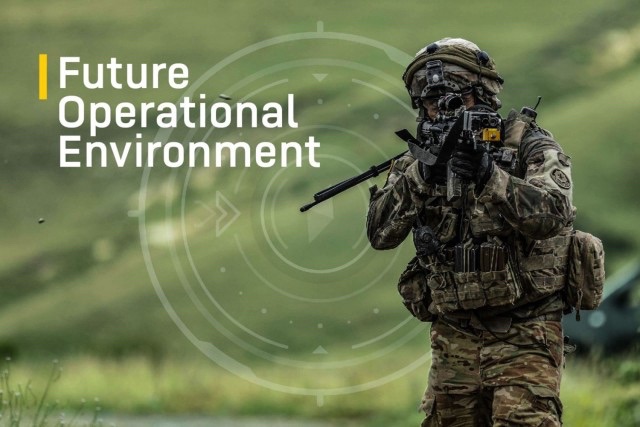
AUSTIN, Texas – Army Futures Command is charged with transforming the Army to ensure war-winning future readiness.
A major effort underpinning this goal is the command’s extensive study and assessment of the future operational environment.
“It’s not about getting it right,” said AFC Commanding General Gen. James E. Rainey of the command’s efforts to forecast future likelihoods. “It’s about not getting it really wrong and seeing what you got wrong and adapting faster than your enemy.”
In late 2022, AFC leadership identified the need for a “running estimate” of what future challenges the Army of 2040 might face, including how it is likely to be shaped by rapidly evolving technologies and shifting global geopolitics.
An initial version of the document, which focused on the 2040 timeframe, was developed by AFC’s Directorate of Intelligence and Security in early 2023.
Referred to as the Future Operational Environment Running Estimate, the living document draws upon insights from previous iterations of future forecasts — among them AFC Pamphlet 525-2, Future Operational Environment: Forging the Future in an Uncertain World 2035-2050 — but was uniquely designed to be updated continually, offering the Army the ability to iteratively refine its understanding of future warfare.
“Army Futures Command’s critical mission is to transform the Army through new capabilities, formations and operational concepts that provide war-winning readiness. Understanding the conditions of the future operational environment and how adversaries may fight is necessary to inform the command so it can develop the capabilities, formations and concepts to achieve overmatch in those conditions,” said Jacob Barton, Ph.D., AFC’s future operational environment intelligence chief.
The running document explores types of conditions warfighters might encounter, technologies that could disrupt the status quo and implications of near-peer adversary activities.
Input for the document is derived from intelligence reporting, academic and scientific studies, and sustained engagement with experts from across the intelligence community, industry, academia and think tanks. The document also includes input from organizations across the command and other elements of the Department of Defense, resulting in comprehensive and in-depth analysis of information, Barton explained.
AFC uses the assessment of the future operational environment to inform all other critical functions performed by the command, including research, concepts, experimentation, requirements and integration.
The work is often extraordinarily complex, given how rapidly situations and technologies can change.
“Some of the most challenging aspects of preparing for the future operational environment involve the difficult nature of attempting to forecast the future,” Barton said.
“In assessing trends about the current operating environment, we attempt to envision the range of possibilities that exist in 10 and 20 years. Then we make assessments of what we believe at the time to be the most likely conditions within the range of potential possibilities.”
Despite the vastness of the challenge, Barton believes AFC is well-positioned to serve as a steward of the document for the Army.
“By having close collaboration with concepts and capabilities writers, engineers, scientists, technologists and integrators, AFC is uniquely suited to compare friendly and adversarial capabilities and provide useful analysis about what might be necessary to provide the Army advantages in the future,” Barton said.
AFC shares its analysis with other members of the joint force, helping to refine understanding of mutual challenges and opportunities related to future readiness.
The Army-specific lens of the running estimate also extends beyond what is typically provided by academia and industry, making it particularly useful to Army leaders and planners. Due to the sensitive nature of the document, it is not available for public consumption; however, its insights are directly contributing to the nation’s ability to protect its future.
“Ultimately, the Army must maintain its advantages,” Barton said. “Protecting the information and judgments inherent to the running estimate is a necessary step to maintaining this advantage.”
By Maureena Thompson, Army Futures Command

